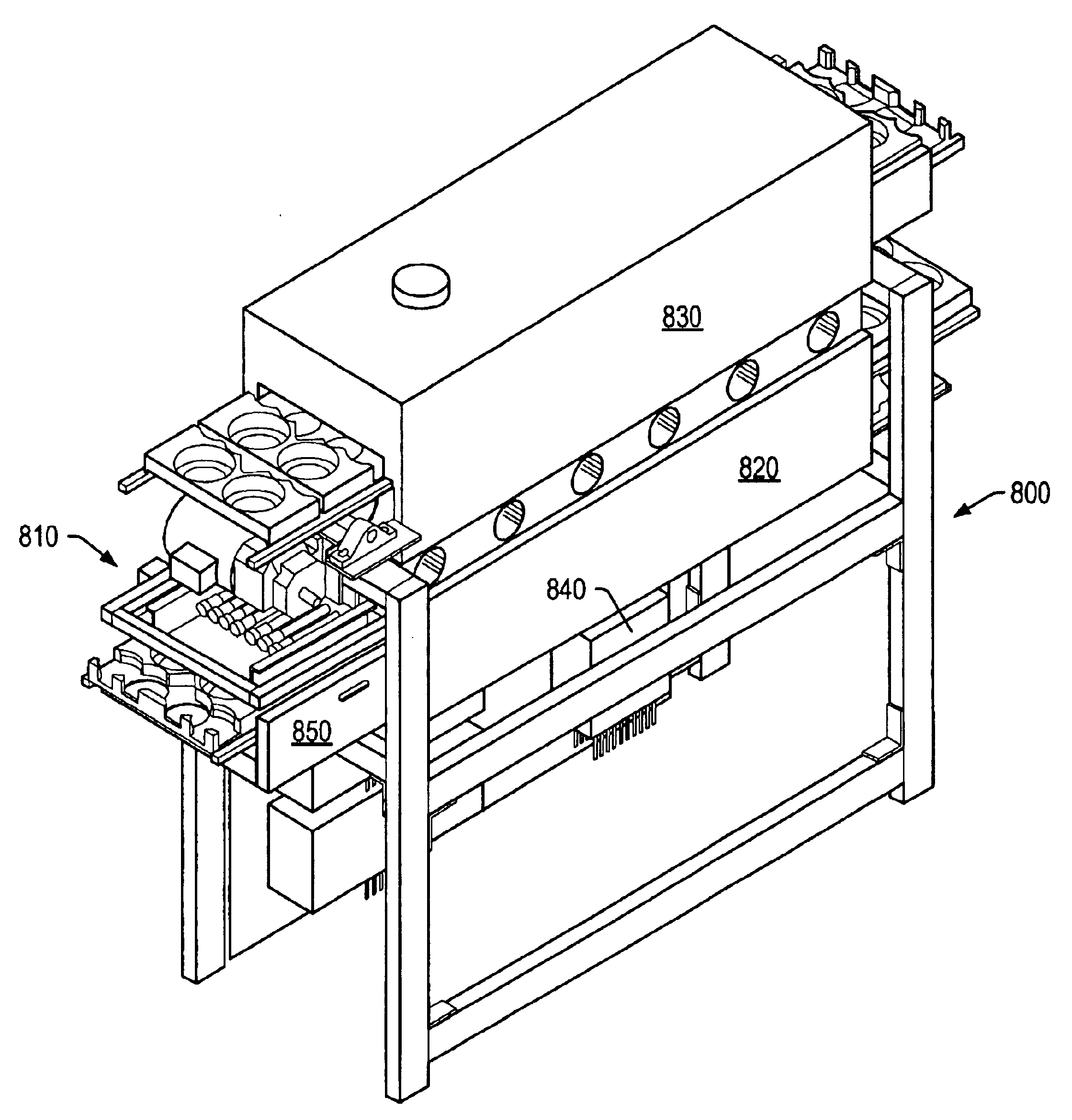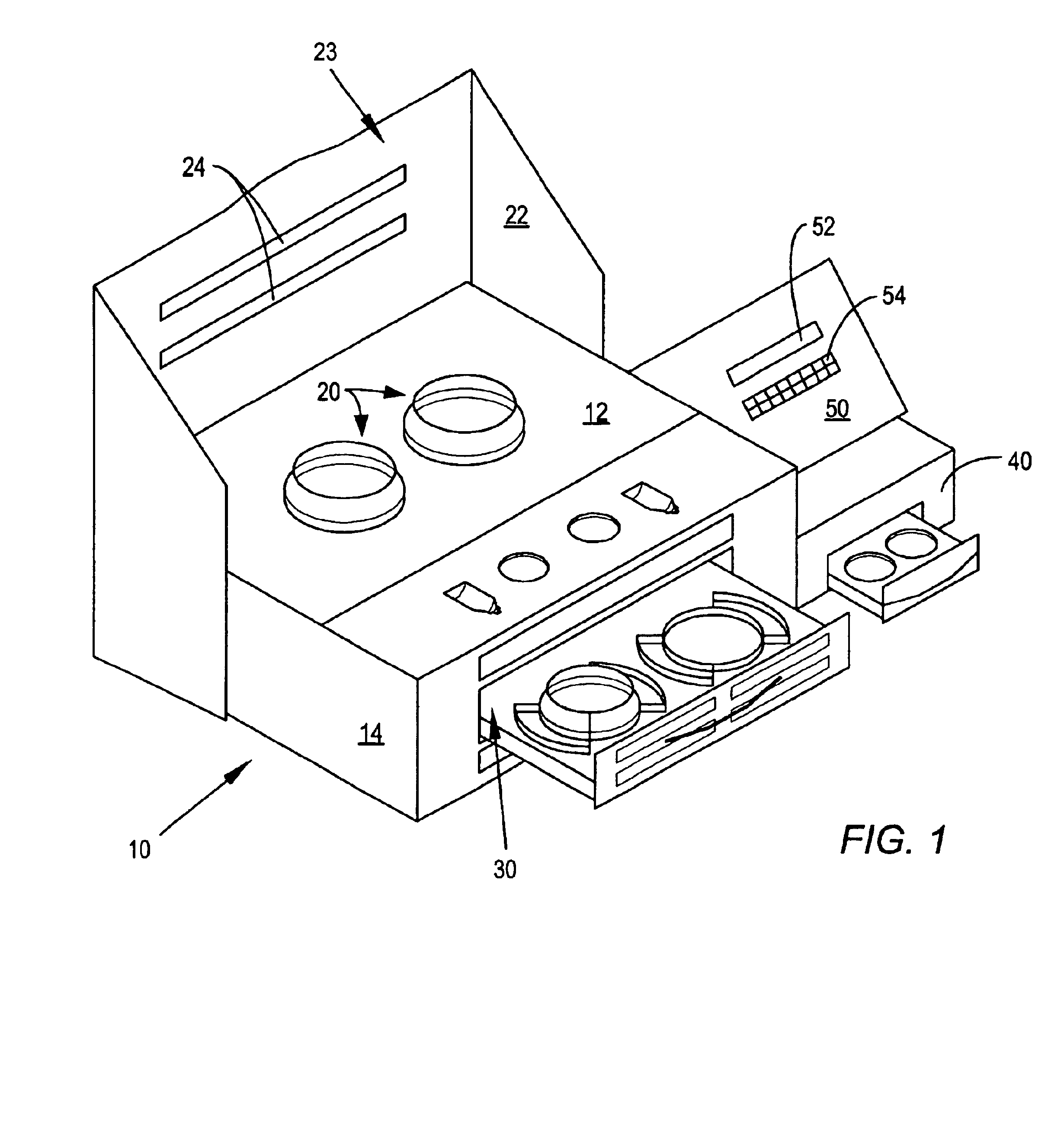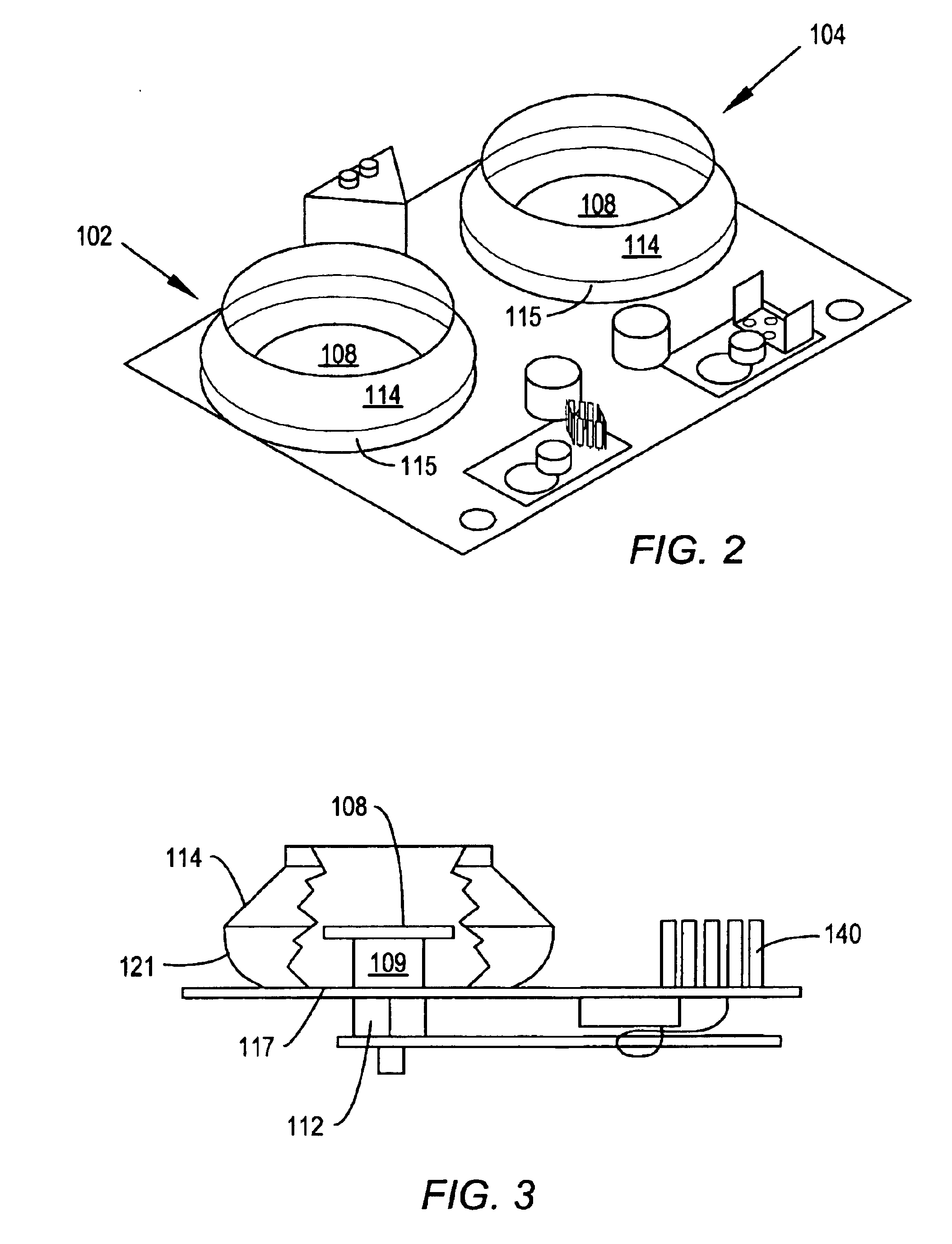Apparatus for preparing an eyeglass lens having a computer system controller
a technology of eyeglass lens and computer system controller, which is applied in the field of eyeglass lens, can solve the problems of lens yellowing, lens or mold cracking, and lens distortion in the lens,
- Summary
- Abstract
- Description
- Claims
- Application Information
AI Technical Summary
Benefits of technology
Problems solved by technology
Method used
Image
Examples
examples
[0553]A plastic eyeglass lens was made according to the process described above from the OMB-99 monomer solution. The lens was then coated with two antireflective coating compositions. In all of the examples, the following abbreviations are used:[0554]“AC” is acetone, commercially available from Aldrich;[0555]“AA” is an acrylic amine commercially available as CN384 from Sartomer;[0556]“Al” is aluminum tri-sec-butoxide (98%) commercially available from Avocado;[0557]“AS” is 3-aminopropyltrimethoxysilane (97%) commercially available from Aldrich;[0558]“BDK”, “BDM”, and “BDMK” are Photomer 51 and 2,2-dimethoxy-2-phenylacetophenone commercially available from Henkel;[0559]“BYK300” is a solution of polyether modified dimethylpolysiloxane copolymer commercially available from BYK Chemie;[0560]“CD1012” is diaryl iodonium hexafluoroantimonate commercially available from Sartomer;[0561]“CD540” is ethoxylated bisphenol A dimethacrylate commercially available from Sartomer;[0562]“CN124” is epo...
PUM
| Property | Measurement | Unit |
|---|---|---|
| Temperature | aaaaa | aaaaa |
| Nanoscale particle size | aaaaa | aaaaa |
| Nanoscale particle size | aaaaa | aaaaa |
Abstract
Description
Claims
Application Information
 Login to View More
Login to View More - R&D
- Intellectual Property
- Life Sciences
- Materials
- Tech Scout
- Unparalleled Data Quality
- Higher Quality Content
- 60% Fewer Hallucinations
Browse by: Latest US Patents, China's latest patents, Technical Efficacy Thesaurus, Application Domain, Technology Topic, Popular Technical Reports.
© 2025 PatSnap. All rights reserved.Legal|Privacy policy|Modern Slavery Act Transparency Statement|Sitemap|About US| Contact US: help@patsnap.com



